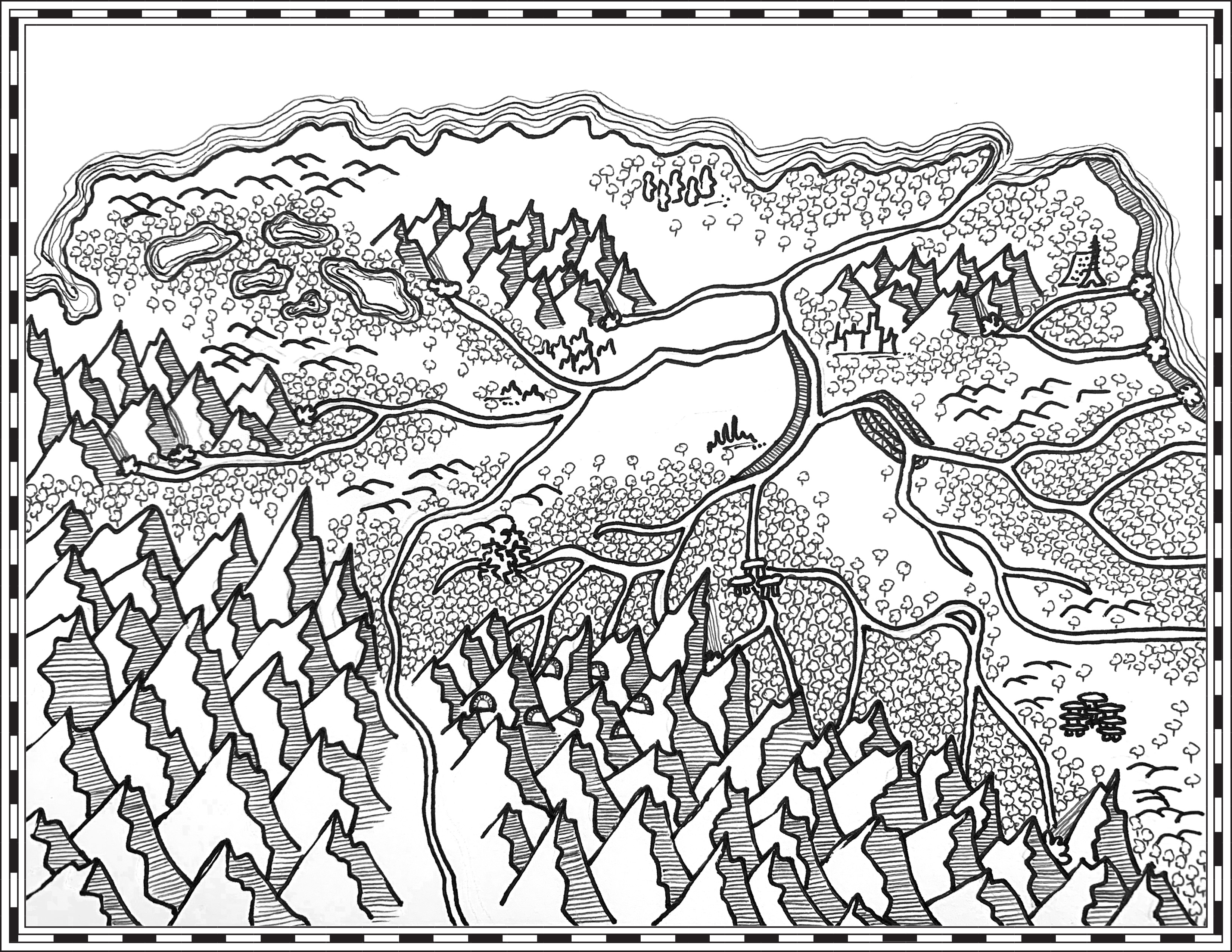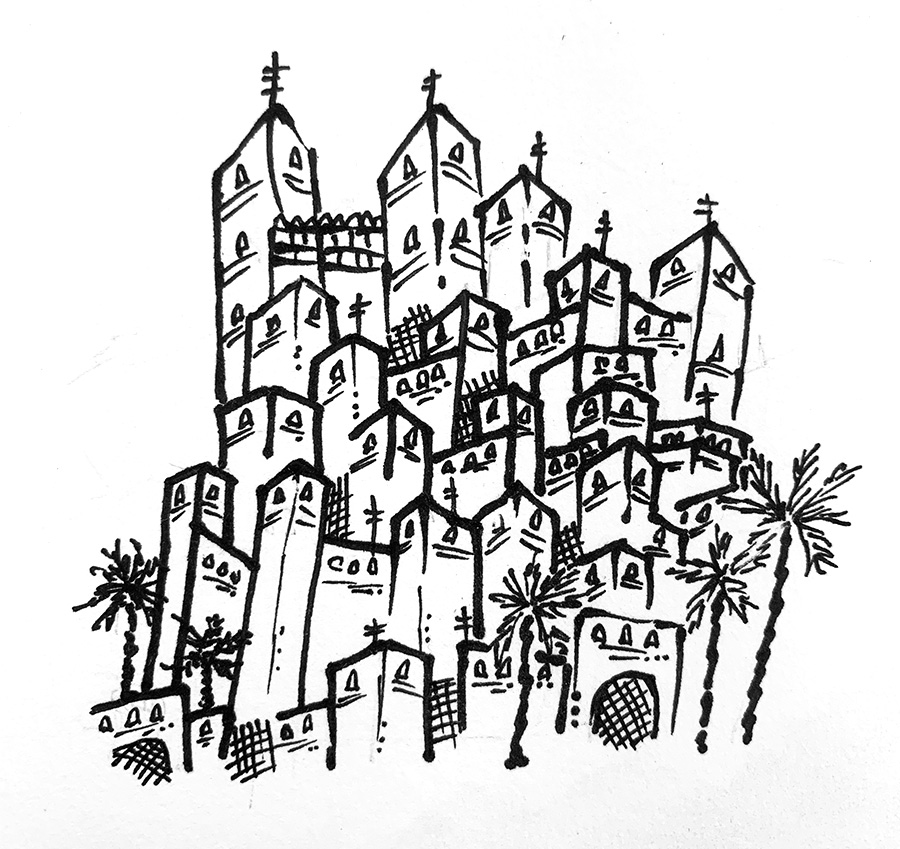Important Monuments
The Seven Temples
Built by the River Tribes to their Gods: Temple 1 built to the War God, Ash, in 855; Temple 2 built to the Victory God, Sequoia, in 760; Temple 3 built to the Knowledge God, Willow, in 645; Temple 4 built to the Light God, Cypress, in 587; Temple 5 built to the Fertility God, Birch, in 505; Temple 6 built to the Death God, Hemlock, in 320; and Temple 7 built to the Prosperity God, Magnolia, in 229.
The Tower of Collette
Built by the Plains Tribes in 219, in what is known as the Half Pyramid City. Notable for being the tallest of the surviving monuments from this period. The base of the tower contains a ring of sold gold in which the names of the Plains Tribes’ Gods of Fate, Love, Beauty, and Wisdom as engraved. It is topped by a gold statue of the fated lover Collette, pictured jumping to her death.
Goddess Waterfall Point
The Mountains Tribes carved the Goddess into the mountainside at the point’s waterfall, completed in 671. There has been debates over which goddess this is supposed to represent, with many scholars thinking it is the Plains goddess of Wisdom, Pella (because of the laurel crown she is holding) and others noting that the outstretched hand of the statue is only seen in Arila, Mountain Water Goddess carvings
Important People
War-King Drolrd II of the River Tribe
Notable for his building of the Seventh Temple and his Rebuilding Towards Greatness Program, which while replenishing the army’s manpower and Tribes' coffers after the Great Drought, can be pointed to as the start of the downfall of the River Tribe.
War-Queen Anaeth of the Plains Tribe
Notable for brokering the 50-year Grey Peace, a period of time where all four Tribes experienced prosperity and growth. Anaeth was hailed as the Golden Queen by her people for bringing this about.
War-King Geird IV of the River Tribe
Notable for both instigating and winning the Border War with the Plains Tribes, breaking the Grey Peace. Remembered by his people as their most ruthless leader.
High-General Telvall of the Mountains Tribe
Notable Mountain Tribes General who won many battles for his War-King, until he was selected to lead the split of the tribes, becoming the first War-King of the Plains Tribe.








I love the way you formatted the section detailing the individual tribes! With the little sketches, too. Lots of great stuff in this article!
Seek a new dawn, in Malkora!
Craft a bright new world, in Ayun Sovos!
The Feral Sovereign returns for Summer Camp 2024!